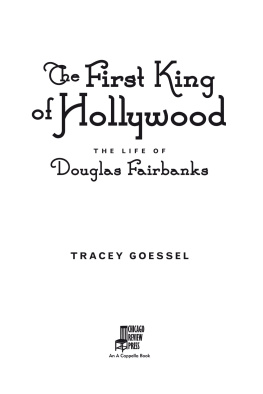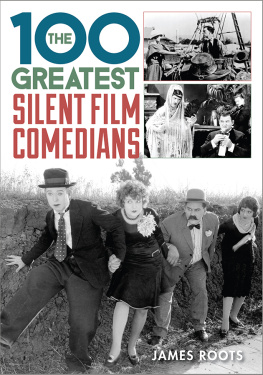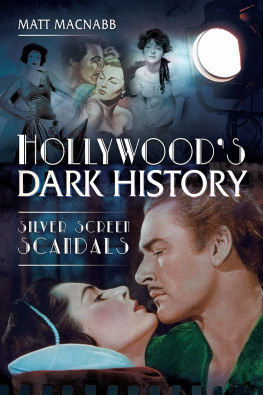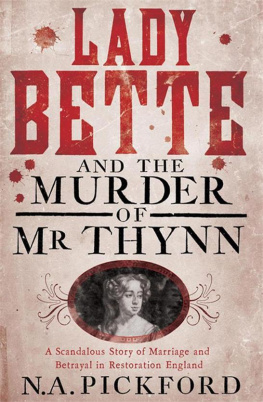Copyright 2016 by Tracey Goessel
All rights reserved
Published by Chicago Review Press Incorporated
814 North Franklin Street
Chicago, Illinois 60610
ISBN 978-1-61373-407-0
Library of Congress Cataloging-in-Publication Data
Goessel, Tracey.
The first king of Hollywood : the life of Douglas Fairbanks / Tracey Goessel.
pages cm
Summary: The first truly definitive biography of Douglas Fairbanks, the greatest leading man of the silent film era Provided by publisher.
Includes bibliographical references and index.
ISBN 978-1-61373-404-9 (hardback)
1. Fairbanks, Douglas, 18831939. 2. ActorsUnited StatesBiography. 3. Motion picture producer and directorsUnited StatesBiography. I. Title.
PN2287.F3G84 2015
791.4302'8092dc23
[B]
2015018526
All images are from the authors collection unless otherwise indicated
Interior design: Nord Compo
Printed in the United States of America
5 4 3 2 1
This digital document has been produced by Nord Compo.
TO MOM AND DAD,
WHO BOUGHT ME THAT FIRST 8MM PROJECTOR
Introduction
W RITERS HAVE STRUGGLED TO capture Douglas Fairbanks in words. To Michael Sragow, he was Gatsby on a jungle gym. To Edward Wagenknecht he was the Yankee Doodle Boy whom George M. Cohan had put on the stage when the eagle screamed more lightheartedly than he does today. To those of his generation, he was simply Doug. This seemed to suffice.
To most people today, however, Douglas Fairbanks is not even a forgotten manhe was never known in the first place. Almost all who were alive when he was in his heyday are gone. Even among the cinephiles he is a neglected figure; Turner Classic Movies has never made him Star of the Month, or even of the Day. Although he preserved every film and turned multiple negatives over to the Museum of Modern Art before his death, a disgraceful number were allowed to deteriorate to powder. Yet he was the most popular male star of the silent era, recognized the world over. In 1924, a peasant in remote China or Soviet Russia might not have known of Abraham Lincoln, but he knew Douglas Fairbanks. His films crossed all language barriers. His sunny cheer and astonishing athletic prowess spoke to the virtues of America in an era when America had no self-doubts about possessing any.
But if the man is nearly forgotten today, why study him? He is, after all, only a movie star. Unless a star was a genius (think Chaplin or Keaton) or retains iconic status (Bogart, Wayne) or lived such a tremendous train wreck of a life as to be a juicy cautionary tale (insert your choice here), there seems to be little point.
But Fairbanks merits attention. He would have been the first to agree that he was no genius (although the skill and wit with which he handled the instrument of his body is akin to that of a virtuoso). He was an icon of his time, but time and memories fade. And for most of his life, he handled himself very intelligently. No train wrecks here.
He deserves our attention because although we do not recognize it, he is still here. When we settle in once a year to watch the Oscars, it is because he cofounded the Academy of Motion Picture Arts and Sciences. When we see the latest release from United Artists, it is because he formed the distribution company that gave independent producers a venue to sell their works. If we enjoy The Wizard of Oz or Gone with the Wind, we likely dont realize that the man who directed those films got his first chance as a director from Douglas Fairbanks. When we drink in the glories of Technicolor, we do so because his intervention saved the company. When we think of Beverly Hills as the place for the rich and famous, it is because he bought and remodeled a hunting lodge and moved into it when the area was nothing more than scrubby hills. When celebrities navigate the depths and shoals of fame with grace, it is because he and his equally famous wife established the pattern. When we try to get tan in the summertime, it is because he made being dark fashionable in an era when paleness was a virtue. When we see Superman put his knuckles on his hips and assume the heros stance, it is because the young artist who first drew him based the characters bearing on that of his hero: Douglas Fairbanks. When Batman goes to the Bat Cave, it is because the creator of the comic strip drew his inspiration from Fairbankss The Mark of Zorro. When we see Mickey Mouse (particularly in the early years), it is because his creator wanted a mix of Douglas Fairbanks and Dougs best friend, Charlie Chaplin. Walt Disney even stipulated that he wanted Prince Charming in Snow White to be modeled after Fairbanks, although it is hard to argue that his animators got very close. Prince Charming was bland. But there was nothing bland about Douglas Fairbanks. He made all the leading men of his era look sick.
He was the top male star of his generation for a reason. He was a lot of fun. He was engaging, creative, visually witty, and a force to be reckoned with. He shaped our idea of the hero to fit his own loopy mold, and it has never been the same since. He married the most famous woman of his generation, herself a powerhouse of formidable dimensions. Together they were called the King and Queen of Hollywood. This was hyperbole, of course, but only just. When his untimely death came, real kings and queens sent their condolences.
His story is also the story of the birth of an industrythe transition of the movie business from a nickel novelty to a worldwide phenomenon. He was not merely an actor in this scene; he was a producer, a distributor, a theater owner. His influence was prodigious.
And he did these things as the product of a bigamous marriage who was raised in a household deserted by its breadwinner when he was a mere five years old. He never finished high school. But he was the winner of the genetic lottery, having a healthy body that would respond to rigorous training; a handsome, amiable face; an intelligent determination; and an affable, good-humored, resilient nature. On top of it all, he had perhaps the most disarming smile in history.
The Father of the Man
I T IS A TALE TOLD in every history of Douglas Fairbanks, the all-purpose story to encapsulate the essence of the man in the activities of the child.
The setting was a middle-class section of Denver in the mid-1880s, the midst of the Gilded Age. A sturdy, nut-brown boy of three (some place the event on his birthday) had once again climbed onto the roof of an outbuilding on his parents property. Up until now, his cheerful, look-at-me flips and graceful leaps had always served to extricate him from great heights. But this time, something went wrong. He fell.
He cut a gash that extended full across the left side of his foreheadan imposing, semi-lunar flap that would be visible in close-ups for the rest of his days. The human scalp is well vascularized, and childrens heads are disproportionately large; the bleeding must have been impressive. The family version of the story included a brief loss of consciousnesswith a twist. The boy, they claimed, had always been taciturn and unsmiling. But upon coming to, and being told what had happened (You fell off the roof, darling!), he did the unexpected. He laughed, joyously. He had fallen off the roof! How delightful!
It seemed to capture the nature of the man the world would come to knowor at least the construct he was to present: the dashing cavalier, enduring risks and injuries while performing his dazzling stunts, laughing at fate. A smile at the right time has won many a battle in the prize ring and in the warfare of life, he once said. The anecdote is irresistible.
The reality, as recalled by the leaper in question almost forty years later, was a little more realistic. I was three years old, he wrote:








